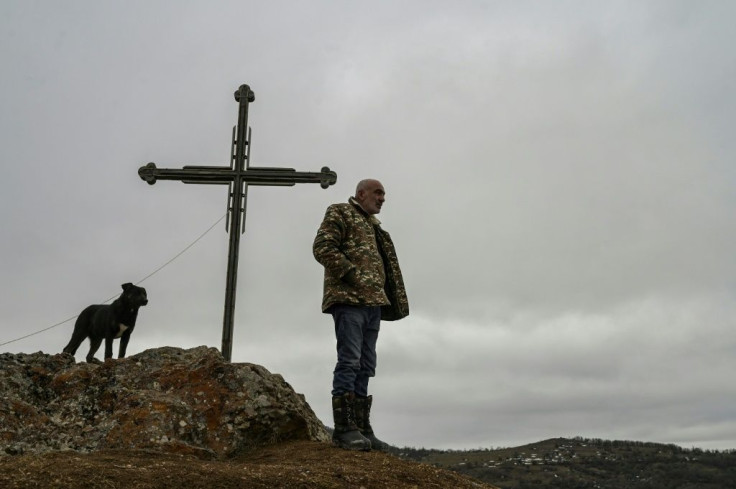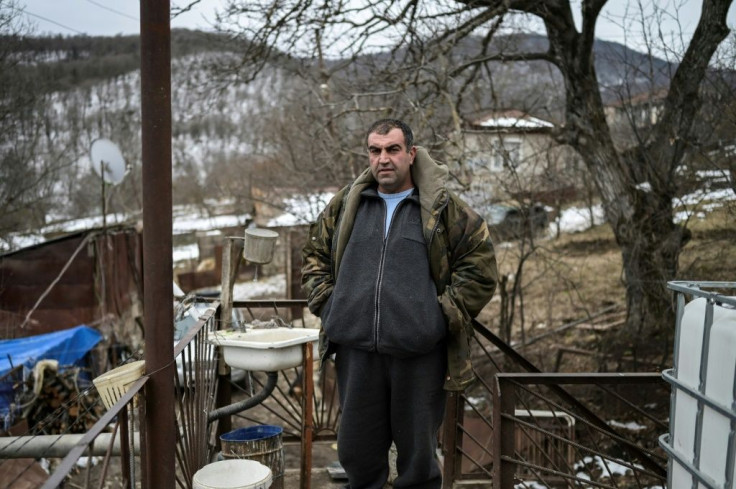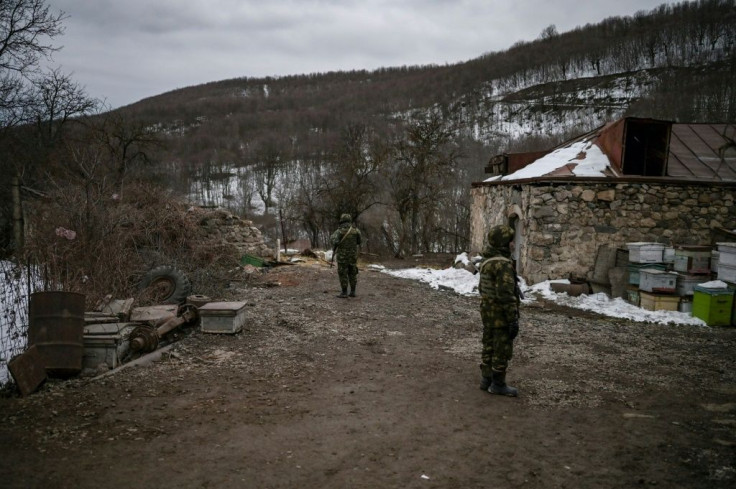Anger And Fear In Village Split By Armenia's New Frontline
Stepan Movsisyan has been told his house remains in Armenia but half of his cow shed now falls under Azerbaijan's control after a war last year dramatically shifted the boundaries between the ex-Soviet foes.
"Apparently GPS says that the border runs right through here," says the former forest ranger, 71, standing in the mud of his front yard.
"But how can that be?"
A few metres away two young Armenian border guards with Kalashnikov rifles keep constant watch.
Next to them a freshly planted sign says you are entering Azerbaijan, and just beyond that the country's flag flaps over a border control camp.

Up until a few months ago the nearest Azerbaijani presence east of the village of Shurnukh was dozens of kilometres away.
Between the two sides lay the territory of the self-declared state of Nagorno-Karabakh, that Armenian fighters seized in a war almost 30 years ago after the Soviet Union's collapse.
But the balance of power was upended by six weeks of fighting that exploded last September and saw Armenia bludgeoned into agreeing to handover swathes of territory to Azerbaijan.
An agreement, brokered by Russia, has meant a return to an internationally recognised border between the two countries that for decades had existed only on paper.

In Shurnukh the border has been staked out more or less along the road that runs through the middle of this impoverished farming village of 28 families.
Across it, Armenian and Azerbaijani forces now eye each other nervously.
In between them stands a small contingent of Russian border troops with an armoured personnel carrier parked up.
On the lower side of the village, a dozen houses have been claimed by Azerbaijan and the Armenian families who lived there forced to leave.

"An Azerbaijani general came and said it was their land," says farmer Khachik Stepanyan.
Now his family has moved into a neighbour's house just across the road, and look out of their window every day at the abandoned home they left behind metres away.
"Of course it feels painful," Stepanyan says.
"This is Armenian land -- and now we have to live with our enemies nearby."
Delineating to whom each scrap of this land belongs is a bitterly contested task.

Much of the problem dates back a century ago, when Soviet leaders drew lines on the map with little concern for old enmities or historical claims.
Azerbaijani families lived in the disputed homes until the late 1980s, but they left as the USSR frayed and long-suppressed ethnic tensions boiled over across the region.
Now the villagers of Shurnukh point to old Soviet maps they insist show the entire village should be in Armenia.
But the Azerbaijani side have used far more modern techniques of satellite mapping to pinpoint where they say the border should be -- and so far they have got their way.
Village head Hakob Arshakyan cannot contain his bitterness at the sudden reversal in fortunes.
Standing on a frigid outcrop, he lets out a stream of swear words when he spots an Azerbaijani border guard in the near distance below.
Arshakyan also had to leave his home and is currently living with his wife and daughter in his office.
"It suffocates you -- we lived there for more than thirty years," he says.
"It was our lives, all our memories."
The Armenian government is building new houses for those displaced further up in the village -- but the villagers insist they want their old land back.
While there has not been any violence reported so far, even the smallest incident requires international mediation and it is difficult to see how the current standoff is sustainable.
"One day someone's pig crossed over onto the other side," explains Arshakyan.
"Our border guards, the Russians and the Azerbaijanis had to agree to watch as the owner was allowed to go and fetch it back."
Even if the residents are allowed back to their homes, having the Azerbaijani troops so close by has put the village on edge.
"Of course it's frightening having them so close -- it's scary for everyone," says Arshakyan's wife Nune, a maths teacher at the village school.
The presence of the Russian troops gives some peace of mind but she worries about the situation if they move out.
"I don't know what would happen if they left," Nune said.
"I don't know how life would be then."
© Copyright AFP {{Year}}. All rights reserved.





















